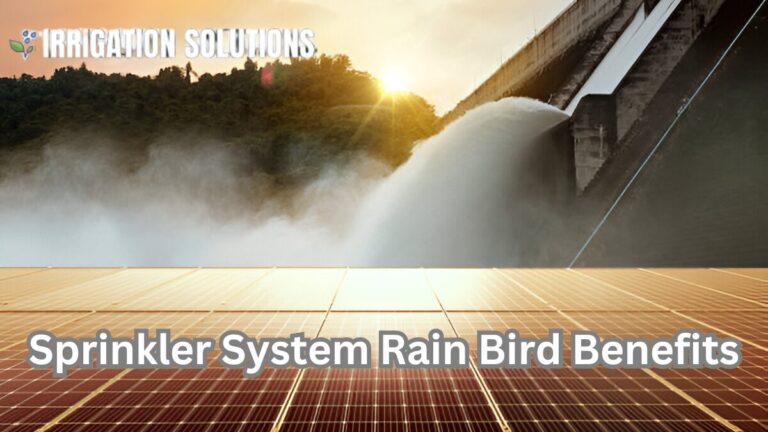Best Water Irrigation Methods

Water plays a crucial role in agriculture, landscaping, and urban planning, ensuring that crops, gardens, and green spaces receive the necessary moisture for healthy growth. With climate change and water scarcity becoming major global concerns, efficient irrigation methods are more important than ever.
This guide covers everything you need to know about water irrigation, from traditional techniques to modern innovations, helping you optimize water usage while improving plant health and crop yields.
What is Water?
Water is the process of supplying water to plants artificially to support their growth when natural rainfall is insufficient. It is essential for maintaining food production, preserving green landscapes, and managing water resources effectively.
Irrigation has been practiced for thousands of years, with ancient civilizations like the Mesopotamians and Egyptians using canal systems to transport water to their fields. Today, advanced technologies such as drip irrigation and smart water management systems have revolutionized the way we irrigate land.
Types of Water Systems
There are several types of irrigation systems, each with its own advantages and best use scenarios.
Surface Irrigation
Surface irrigation involves distributing water across the land by gravity. It includes methods like:
- Furrow Irrigation Water flows through small channels between rows of crops.
- Basin Irrigation Water is pooled in flat areas and slowly absorbed by the soil.
- Border Irrigation Fields are divided into sections where water is allowed to flow evenly.
✔ Best for: Large fields, floodplain farming, and areas with ample water supply.
✔ Downside: High water wastage due to runoff and evaporation.
Drip Irrigation
Drip irrigation delivers water directly to the roots of plants through a network of tubing and emitters.
✔ Best for: Water conservation, orchards, vineyards, and vegetable farming.
✔ Benefits: Saves up to 60% more water than traditional methods and reduces weed growth.
Sprinkler Irrigation
This method mimics natural rainfall by distributing water through high pressure sprinklers.
✔ Best for: Lawns, golf courses, and large agricultural fields.
✔ Challenges: High initial cost, wind interference, and water loss through evaporation.
Subsurface Irrigation
Water is supplied directly to plant roots through underground pipes or tubes, reducing surface evaporation.
✔ Best for: High value crops and areas with limited water resources.
✔ Downside: High installation cost and potential for clogging.
Factors Affecting Irrigation Efficiency
For optimal results, it’s essential to consider the following factors:
| Factor | Impact on Irrigation |
| Soil Type | Sandy soils drain quickly, requiring frequent irrigation, while clay soils retain water longer. |
| Climate | Hot, dry climates need more frequent watering, while humid areas require less. |
| Crop Type | Different plants have unique water needs; deep rooted crops require deeper irrigation. |
| Water Availability | Limited water supply calls for efficient methods like drip or subsurface irrigation. |
Benefits of Efficient Water
✔ Water Conservation Reduces unnecessary water wastage.
✔ Higher Crop Yields Ensures plants receive the right amount of moisture.
✔ Soil Protection Prevents erosion and nutrient leaching.
✔ Cost Savings Lowers water bills and reduces labor costs.
✔ Sustainable Farming Supports long term agricultural productivity.
Innovative Irrigation Technologies
New irrigation technologies are making water management more efficient.
Smart Irrigation Systems
These use sensors, weather data, and automation to optimize water delivery based on real time conditions.
Soil Moisture Sensors
Placed in the ground, these sensors measure moisture levels and adjust irrigation schedules accordingly.
Solar Powered Irrigation
Using solar panels to pump water is an eco friendly solution for remote farming areas.
AI & Machine Learning in Irrigation
Artificial intelligence analyzes data to improve irrigation planning and predict water needs.
Case Study: Drip Irrigation in Israel
Israel, a country with limited water resources, has pioneered drip irrigation technology to maximize water efficiency. By using this method, Israeli farmers have reduced water usage by up to 50% while increasing crop yields. Their innovations have set a global benchmark for sustainable irrigation.
Challenges in Water
Despite advancements, irrigation still faces challenges:
- Water Scarcity Climate change is making water sources unpredictable.
- High Costs Advanced irrigation systems require significant investment.
- Salinity Issues Poor irrigation management can lead to soil salinity, reducing fertility.
- Infrastructure Gaps Many developing regions lack access to efficient irrigation technologies.
Tips for Improving Irrigation Efficiency
✔ Use mulching to retain soil moisture.
✔ Water plants early in the morning or late in the evening to reduce evaporation.
✔ Invest in rainwater harvesting systems.
✔ Regularly maintain irrigation equipment to prevent leaks.
✔ Opt for drought resistant crops in arid regions.
Conclusion
Irrigation is the backbone of agriculture and landscaping, ensuring food security and environmental sustainability. By adopting efficient irrigation practices, utilizing modern technology, and addressing challenges proactively, we can make the most of our water resources while ensuring long term agricultural success.
Final Thought:
“Every drop of water counts. Efficient irrigation is not just about growing plants; it’s about securing the future of agriculture and conserving our most precious resource.”
Would you like more details on a specific irrigation method? Let me know!






